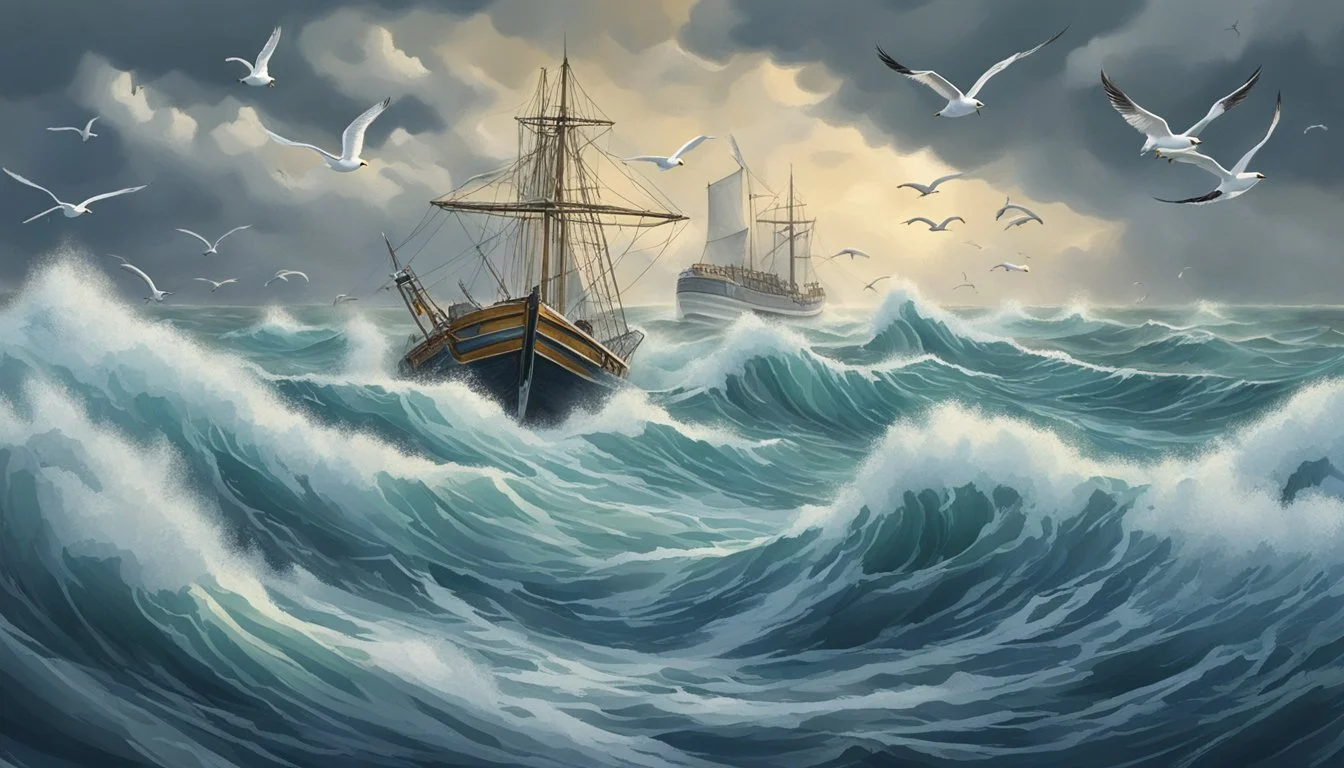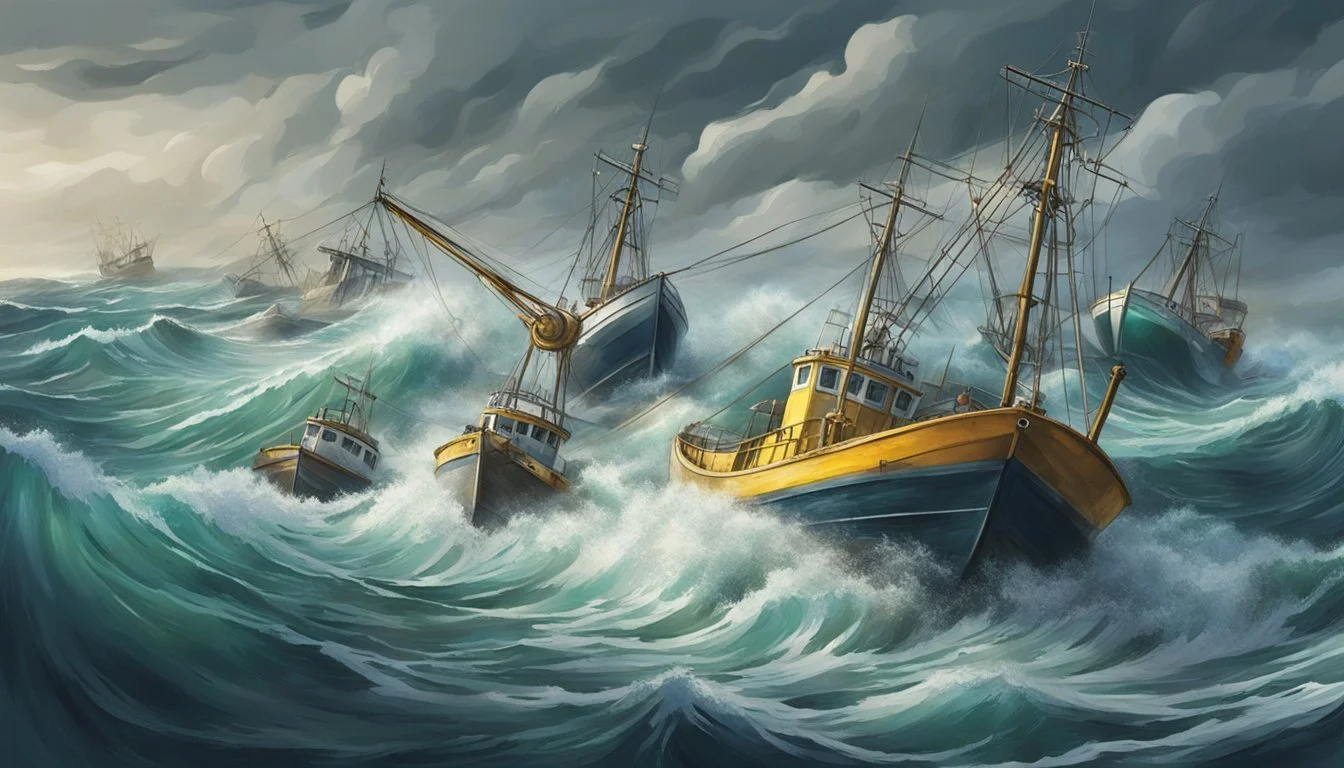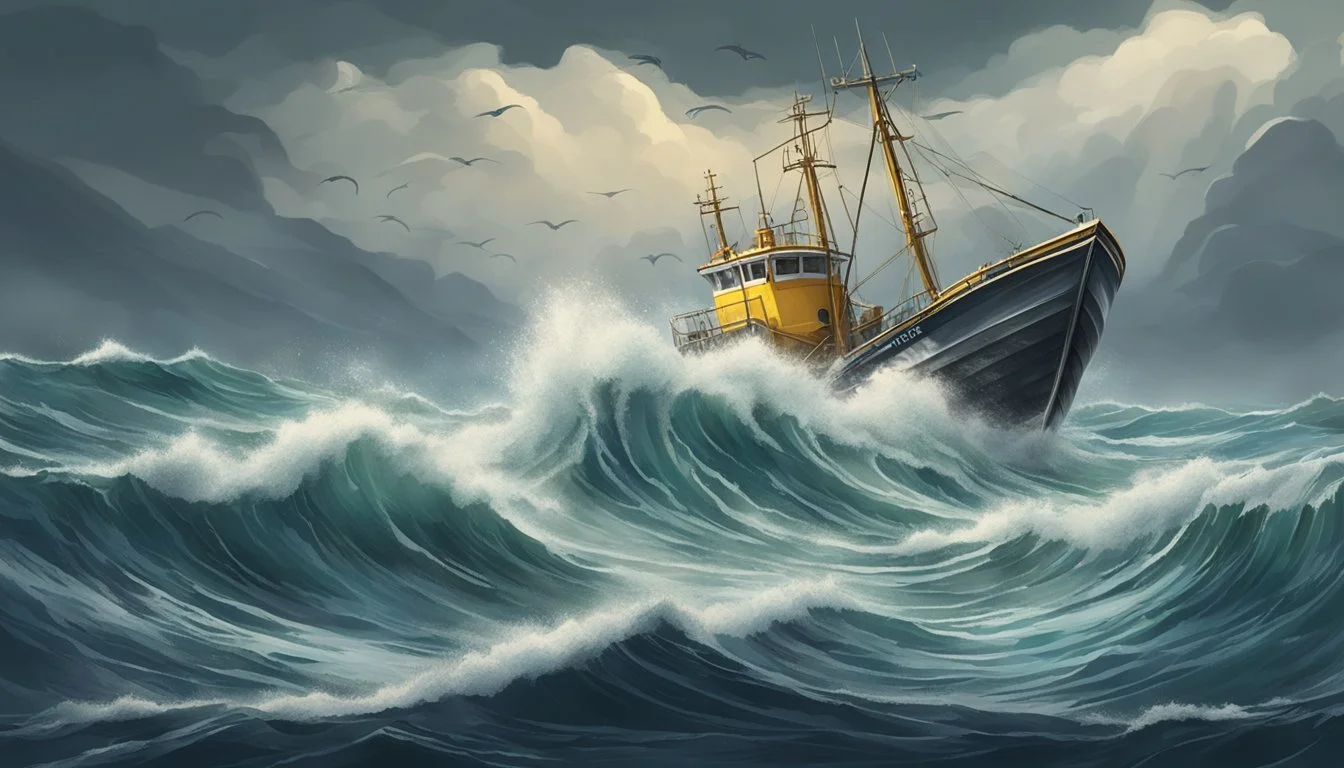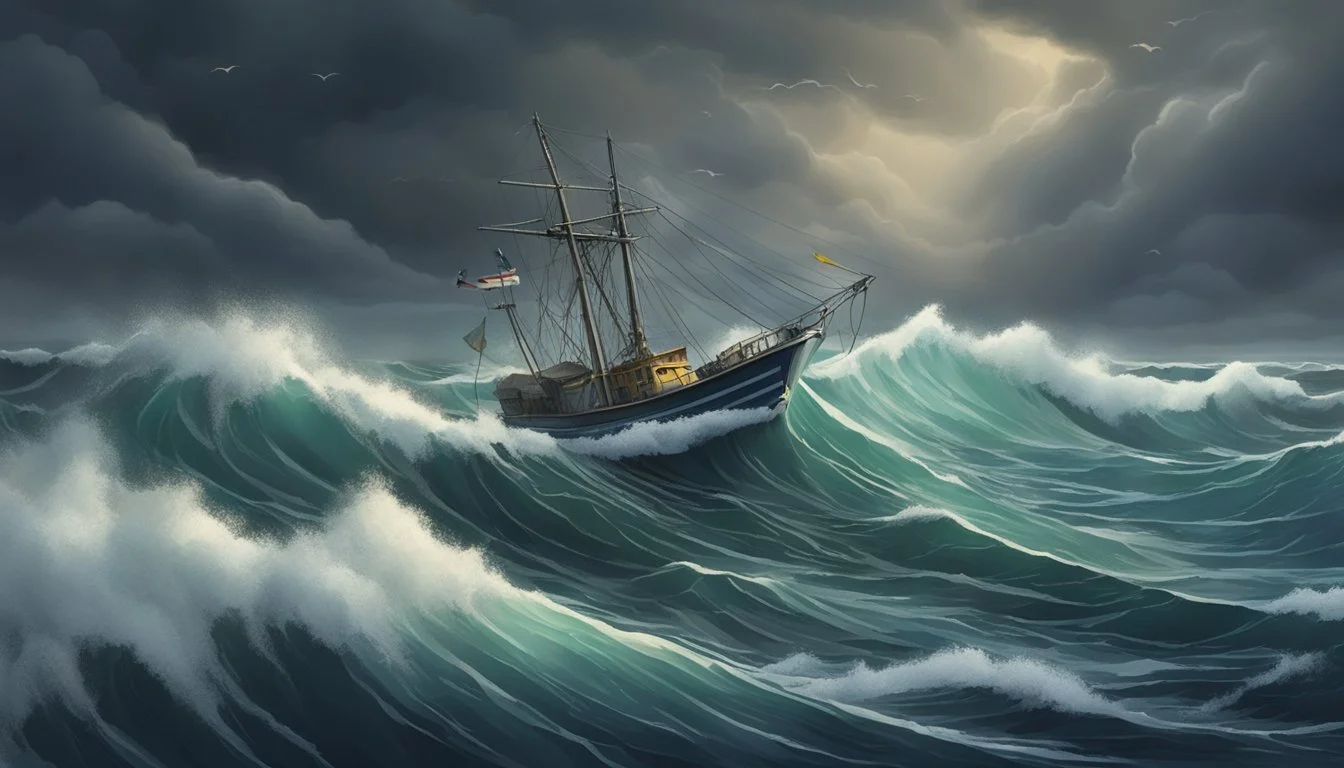Deadliest Catch's Influence on Modern Work Safety Discussions
Lessons from Extreme Fishing
Deadliest Catch, the popular reality series about Alaskan crab fishing, has significantly influenced discussions about workplace safety since its debut in 2005. The show vividly portrays the extreme risks faced by commercial fishermen, bringing their dangerous occupation into millions of homes worldwide. By showcasing the perilous conditions and near-death experiences of crab boat crews, Deadliest Catch has sparked increased awareness and dialogue about safety standards in high-risk industries.
The series has altered public perception of commercial fishing, highlighting it as one of the most hazardous professions. This heightened awareness has led to closer scrutiny of safety regulations and practices within the fishing industry. Maritime laws and worker protections have been reevaluated and improved in response to the issues brought to light by the show.
Deadliest Catch's impact extends beyond the fishing industry, contributing to broader conversations about occupational hazards and the importance of robust safety measures across various dangerous professions. The show's raw depiction of workplace risks has encouraged employers and policymakers to prioritize worker safety and implement more stringent protective measures in high-risk occupations.
Origins and Legacy of 'Deadliest Catch'
'Deadliest Catch' emerged as a groundbreaking reality TV series, documenting the perilous world of Alaskan crab fishing. The show's origins, evolution, and lasting impact have shaped both television and popular culture.
Conception and Evolution
'Deadliest Catch' premiered on the Discovery Channel on April 12, 2005. The series grew from a 1999 TV documentary called "Deadliest Job in the World," which explored the dangers of crab fishing in the Bering Sea.
The show's creators saw potential in the dramatic, real-life stories of fishermen risking their lives. They decided to expand the concept into a full series, focusing on multiple vessels and their crews.
As 'Deadliest Catch' gained popularity, it expanded its scope. The series began covering both king crab and snow crab fishing seasons, providing viewers with a comprehensive look at the industry.
Impact on Reality Television
'Deadliest Catch' revolutionized reality TV by showcasing genuine danger and raw human emotion. The show's success inspired other networks to create similar high-stakes documentary series.
Its unique format blended adventure, drama, and education. Viewers learned about crab fishing techniques, marine biology, and the economic importance of the industry to Alaska.
The series also set new standards for production quality in reality TV. Innovative camera techniques and editing styles captured the harsh conditions at sea, raising the bar for documentary filmmaking.
Recognition and Awards
'Deadliest Catch' has received critical acclaim throughout its run. The series has won multiple Emmy Awards for Outstanding Reality Program and cinematography.
Its success led to spin-off shows like "After the Catch" and "Deadliest Catch: Dungeon Cove," further expanding the franchise's reach.
The show's captains and crew members became celebrities in their own right, appearing on talk shows and other media outlets.
Influence on Popular Culture
'Deadliest Catch' has significantly impacted popular culture, bringing attention to the dangerous profession of crab fishing.
The series inspired video games, books, and merchandise, extending its influence beyond television.
It sparked public interest in maritime professions and raised awareness about the importance of workplace safety in hazardous industries.
The show's portrayal of teamwork, perseverance, and the human spirit in extreme conditions resonated with audiences worldwide.
Overview of Crab Fishing Industry
The crab fishing industry is a vital component of Alaska's economy and marine ecosystem. It involves complex operations, diverse species, and a network of dedicated professionals working in challenging conditions.
Economic Significance
Crab fishing contributes significantly to Alaska's economy. In 2024, the industry generated over $200 million in revenue. The Bering Sea crab fishery alone accounts for approximately 70% of this total. Exports to Japan, China, and Europe drive much of the demand for Alaskan crab.
The industry supports thousands of jobs, including fishermen, processors, and support services. Crab fishing also boosts local economies in coastal communities like Dutch Harbor and Kodiak.
Crab Species and Seasons
Alaska's crab fishery targets several species:
King crab (red and golden)
Snow crab (opilio)
Tanner crab (bairdi)
Each species has distinct fishing seasons regulated by the Alaska Department of Fish and Game:
King crab: October to January
Snow crab: January to March
Tanner crab: January to March
These seasons are set based on crab molting cycles and population assessments to ensure sustainable harvests.
Fishing Crew and Vessels
Crab fishing vessels, known as crabbers, typically range from 70 to 200 feet in length. Crews consist of 5-7 members, including:
Captain
Deck boss
Engineers
Deckhands
Roles are highly specialized, with each crew member performing specific tasks. Work is intense and often dangerous, with shifts lasting up to 18 hours during peak season.
Vessels use specialized equipment like:
Crab pots (large metal traps)
Hydraulic cranes for deploying and retrieving pots
Sorting tables for processing catch
Dutch Harbor: The Hub of Alaskan Crab Fishing
Dutch Harbor, located in the Aleutian Islands, serves as the primary port for the Bering Sea crab fleet. It offers:
Protected anchorage
Processing facilities
Fuel and supply services
Transportation links
The port handles millions of pounds of crab annually. It's also featured prominently in the "Deadliest Catch" TV series, bringing wider attention to the industry.
Regulation and Sustainability Efforts
The crab fishery is heavily regulated to ensure long-term sustainability. Key measures include:
Annual catch quotas based on scientific surveys
Limited entry permits to control fleet size
Minimum size limits for harvested crabs
Restrictions on harvesting female crabs
The Alaska Department of Fish and Game works closely with federal agencies and industry stakeholders to manage the fishery. Recent efforts focus on:
Improving stock assessments
Studying climate change impacts
Developing more selective fishing gear
These initiatives aim to balance economic needs with environmental conservation, ensuring the crab fishery remains viable for future generations.
Risks and Challenges in Crab Fishing
Crab fishing in the Bering Sea presents numerous hazards that contribute to its reputation as one of the world's most dangerous occupations. Fishermen face perilous conditions, physical dangers, and mental stressors throughout each fishing season.
Working Conditions on the Bering Sea
The Bering Sea is notorious for its harsh environment. Fishing vessels operate in frigid temperatures, often below freezing. Strong winds and storms are common, creating treacherous waves that can reach heights of 30 feet or more.
Rogue waves pose a significant threat, capable of capsizing even large fishing boats. These unpredictable swells can strike without warning, sweeping crew members overboard.
Ice accumulation on vessels is another serious concern. It adds dangerous weight and affects stability, increasing the risk of capsizing.
Common Accidents and Fatalities
Crab fishing's high fatality rate stems from various hazards. Drowning is a primary cause of death, often resulting from falling overboard in rough seas or vessel sinkings.
Hypothermia is another major risk due to the frigid water temperatures. Even with survival suits, prolonged exposure can be fatal.
Injuries from heavy equipment are common. Crab pots, weighing up to 800 pounds, can crush crew members if not properly secured.
• Slips and falls on icy decks • Machinery accidents • Entanglement in fishing gear
The CDC reported that in the late 1990s, the Bering Sea crab fleet averaged eight fatalities per year.
Psychological Impacts of High-Stakes Work
The mental toll of crab fishing is significant. Crew members work long hours in high-stress conditions, often 20 hours or more per day during peak season.
Sleep deprivation is a constant challenge, affecting decision-making and increasing accident risks. The isolation at sea for weeks or months can lead to feelings of loneliness and depression.
Financial pressures add to the stress. Fishermen's income depends on the catch, creating a high-stakes environment where safety may be compromised for profit.
The constant threat of danger can result in anxiety and PTSD among crew members, especially following near-miss incidents or witnessing accidents.
Work Safety and Regulation
"Deadliest Catch" has spotlighted crucial safety and regulatory issues in the Alaskan crab fishing industry. The show's impact extends beyond entertainment, influencing real-world policies and practices aimed at protecting fishermen and marine resources.
Evolution of Safety Policies
Safety policies in Alaskan crab fishing have undergone significant changes since "Deadliest Catch" first aired. The show exposed the hazardous conditions faced by fishermen, prompting industry-wide improvements. Mandatory safety training programs were implemented, focusing on emergency procedures and equipment use.
Vessel safety requirements became more stringent. Regular inspections and maintenance checks are now standard practice. Personal flotation devices and survival suits are required for all crew members.
Weather monitoring systems have been upgraded, allowing captains to make more informed decisions about when to fish. These policy changes have contributed to a notable decrease in fishing-related fatalities and injuries.
Role of the U.S. Coast Guard
The U.S. Coast Guard plays a vital role in ensuring safety in the Bering Sea. "Deadliest Catch" has highlighted their crucial rescue operations and regulatory enforcement.
Coast Guard personnel conduct vessel inspections before each fishing season. They verify safety equipment, structural integrity, and crew qualifications. During the fishing season, they maintain a constant presence in the area.
Their rapid response capabilities have saved numerous lives. The show has depicted dramatic rescue missions, showcasing the Coast Guard's skill and bravery. These portrayals have increased public awareness of their essential work.
The Coast Guard also enforces fishing regulations, combating illegal fishing and ensuring compliance with catch limits.
Techniques for Ensuring Crew Safety
"Deadliest Catch" has showcased various techniques employed to enhance crew safety. Regular safety drills are conducted, preparing crew members for emergencies such as man overboard situations or vessel fires.
Communication systems have been improved, allowing for better coordination during dangerous operations. Crews now use advanced personal protective equipment, including cold water immersion suits and safety harnesses.
• Improved deck layouts to reduce trip hazards • Installation of emergency beacons on vessels • Enhanced medical training for crew members • Implementation of work-rest schedules to prevent fatigue
These techniques have significantly reduced the risk of accidents and improved overall crew well-being.
Prevention of Overfishing and Conservation Measures
The show has raised awareness about the importance of sustainable fishing practices. It has depicted the implementation and impact of catch limits and fishing quotas.
Fishery management councils use scientific data to set sustainable catch limits. "Deadliest Catch" has shown how these limits affect fishing operations and crew livelihoods.
Conservation measures include:
Seasonal fishing closures to protect breeding populations
Size restrictions to ensure juvenile crabs can mature
Gender-specific catch limits to maintain population balance
The show has also highlighted efforts to combat illegal fishing, which threatens both the ecosystem and the livelihoods of law-abiding fishermen. On-board observers monitor catches and ensure compliance with regulations.
The Personal Cost of Crab Fishing
Crab fishing in the Bering Sea exacts a heavy toll on those who pursue this dangerous profession. The physical and emotional challenges faced by fishing crews extend far beyond the workplace, impacting their personal lives and wellbeing in profound ways.
Mental Health and Substance Abuse
The extreme stress and isolation of crab fishing can lead to severe mental health issues. Many fishermen struggle with depression and anxiety due to long periods away from home and constant danger.
Substance abuse is common among crab fishermen as a coping mechanism. Alcohol and drug use often increase during fishing seasons, with some crew members developing addictions.
The Coast Guard reports higher rates of mental health incidents among fishing vessels compared to other maritime professions. Support services for fishermen have expanded in recent years, but access remains limited while at sea.
Family Life and Personal Sacrifices
Crab fishing demands long absences from home, straining relationships with family and friends. Marriages often suffer, with high divorce rates among fishermen.
Children of crab fishers may experience emotional difficulties due to a parent's prolonged absences and the constant worry about their safety. Many miss important milestones and family events.
Financial instability adds further stress to family life. The feast-or-famine nature of crab seasons can lead to financial hardships during off-seasons.
Heroism and Maritime Culture
Despite the challenges, many crab fishermen take pride in their profession's storied history and culture of bravery. They see themselves as modern-day heroes, battling the elements to provide for their families.
The fishing community often rallies together in times of crisis. When vessels are lost at sea, fellow fishermen and the Coast Guard mount extensive search and rescue efforts.
Books like those by Linda Greenlaw have romanticized the profession, attracting new generations to the industry. However, this glorification can overshadow the harsh realities of life at sea.
Heart attacks and other health issues are common due to the physical demands and poor diet associated with long fishing trips. Many fishermen neglect their health, prioritizing work over regular medical check-ups.
Influence on Public Perception and Policy
"Deadliest Catch" has shaped public views on commercial fishing and influenced maritime policies. The show's dramatic portrayal of crab fishing in Alaska has captivated audiences worldwide, leading to increased awareness of industry challenges and safety concerns.
Media Portrayal of Maritime Industries
The reality series has brought the dangers of commercial fishing into millions of homes. Viewers witness the harsh working conditions, extreme weather, and life-threatening situations faced by crab fishermen. This raw depiction has fostered a deeper appreciation for the risks involved in supplying seafood to consumers.
The show's popularity has also sparked interest in other maritime professions. It has highlighted the crucial role of the Coast Guard in ensuring safety at sea. Public perception of these industries has shifted, with many gaining newfound respect for those who work in challenging marine environments.
Effects on Policy and Maritime Law
"Deadliest Catch" has indirectly influenced policy discussions and maritime legislation. The show's focus on safety protocols and equipment has raised awareness about the importance of regulations in protecting fishermen's lives.
Policymakers have taken notice of the issues portrayed in the series. Some safety measures implemented in the fishing industry can be traced back to increased public awareness generated by the show. The Coast Guard has also benefited from the exposure, potentially leading to improved funding and resources for maritime safety operations.
The series has become a reference point in discussions about sustainable fishing practices and conservation efforts. It has prompted debates on quota systems and fishing seasons, influencing how the public perceives fishery management policies.
Notable Figures of 'Deadliest Catch'
'Deadliest Catch' has featured several captains and crew members who have become iconic figures in the world of crab fishing. These individuals have shaped the series through their unique personalities, leadership styles, and personal journeys.
Biographies and Backstories
Captain Sig Hansen of the F/V Northwestern comes from a long line of Norwegian fishermen. He started fishing at age 14 and became a full-time captain by 24. Bill Wichrowski, known as "Wild Bill," began his maritime career in the Coast Guard before transitioning to commercial fishing.
Captain Keith Colburn worked his way up from greenhorn to owner-operator of the Wizard. He's known for his strategic approach to fishing. Jake Anderson's story resonates with many viewers. He overcame personal struggles to become captain of the Saga.
Steve "Harley" Davidson captains the Southern Wind. His aggressive fishing style often puts him at odds with other captains. Jack Bunnell, a veteran deck boss, is respected for his experience and no-nonsense attitude.
Leadership Styles and Legacies
Sig Hansen is known for his intense work ethic and traditional Norwegian fishing methods. He often pushes his crew hard but maintains a family-oriented atmosphere on the Northwestern. Keith Colburn employs a more analytical approach, using data and technology to locate crab.
Wild Bill Wichrowski's leadership style is direct and sometimes abrasive. He demands excellence from his crew. Jake Anderson, as a younger captain, blends modern techniques with lessons learned from his mentors.
Harley Davidson's competitive nature leads to a high-pressure environment on his boat. Jack Bunnell's leadership on deck is characterized by his calm demeanor in high-stress situations.
Personal Impact on the Series
Sig Hansen's family dynamic, including his brother Edgar and daughter Mandy, has been a central storyline. His health scares have also highlighted the stress of the job. Keith Colburn's battles with his brother Monte have added drama to the Wizard's operations.
Jake Anderson's personal growth from addict to respected captain has inspired many viewers. His resilience in the face of family tragedies has been particularly impactful.
Wild Bill's contentious relationships with his sons and other crew members have provided compelling television. Harley Davidson's conflicts with other captains have added tension to the competitive aspect of crab fishing.
Cinematography and the Art of Storytelling
Deadliest Catch revolutionized reality TV through innovative cinematography and compelling storytelling techniques. The show's visual approach and narrative style set new standards for capturing dangerous professions on camera.
Filming in Extreme Conditions
Camera crews on Deadliest Catch face brutal weather and treacherous seas to document crab fishing in the Bering Sea. Specialized equipment protects cameras from saltwater and freezing temperatures. Operators use heavy-duty stabilizers to steady shots on rolling decks.
Filmmakers employ creative angles to capture the action. Wide shots showcase massive waves, while close-ups reveal the fishermen's intense focus. Night vision and infrared cameras allow filming in darkness and fog.
During the Opilio crab season, crews contend with icy conditions that threaten both equipment and personal safety. Their dedication results in raw, authentic footage that immerses viewers in the perilous world of Alaskan crab fishing.
Narrative Techniques in Reality TV
Deadliest Catch utilizes sophisticated storytelling methods to craft engaging narratives from real events. Editors weave together footage from multiple boats to create parallel storylines and build suspense.
Narration guides viewers through complex fishing operations and interpersonal dynamics. Voice-over explanations clarify technical aspects of crabbing while emphasizing the human drama.
The show balances action sequences with quieter moments that reveal fishermen's personal lives and motivations. This approach creates multidimensional characters viewers can connect with emotionally.
Producers carefully structure each episode to maintain tension and pacing. Cliffhangers at commercial breaks keep audiences invested in unfolding storylines across the fishing season.
Award-Winning Production Quality
Deadliest Catch's exceptional cinematography and editing have earned critical acclaim and numerous accolades. The show has received multiple Emmy nominations for Outstanding Cinematography in a Reality Program.
Its innovative filming techniques have influenced other documentary series focused on dangerous professions. The raw, immersive style pioneered by Deadliest Catch is now a hallmark of high-quality reality programming.
The series sets a high bar for visual storytelling in non-fiction TV. Its ability to capture genuine human drama in extreme conditions continues to captivate audiences and inspire filmmakers in the reality genre.







